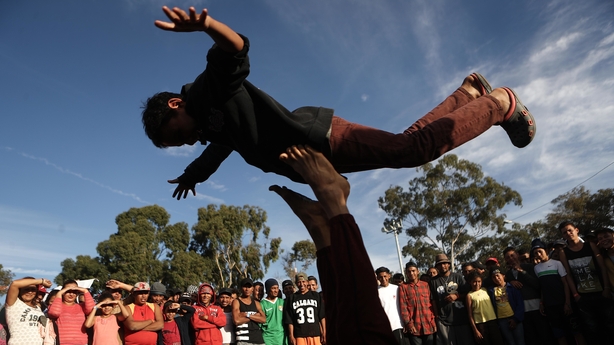They were communities divided, with mixed and sour opinions of each other.
But almost 400 years ago, they broke bread and had the first Thanksgiving. The bitter relationship between the Pilgrims and the Wampanoag Indian tribe were put to the side for the celebration.
Today, Americans continue to strip the meat from turkey bones, but the bread has become untouched.
As thousands of migrants fleeing persecution and violence reach the US/Mexico border, they will not be met with olive branches but barbed wire and barricades.
Here is everything you need to know about the migrant caravan as they take five million steps towards their American dream.
How did this all start?
From Tapachula to Tijuana, over 4,000km have been walked, hiked and hitch-hiked by the caravan.
However, this isn’t the first group to take on the long journey.
The 'Viacrucis del Migrante' set off during Holy Week in early 2017, and another in 2018, towards the United States in small numbers.
The most recent caravan though is making headlines around the world.
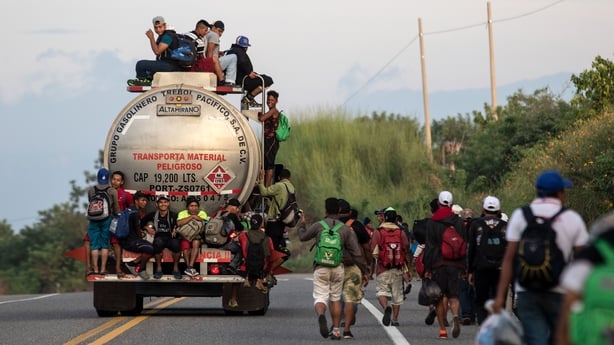
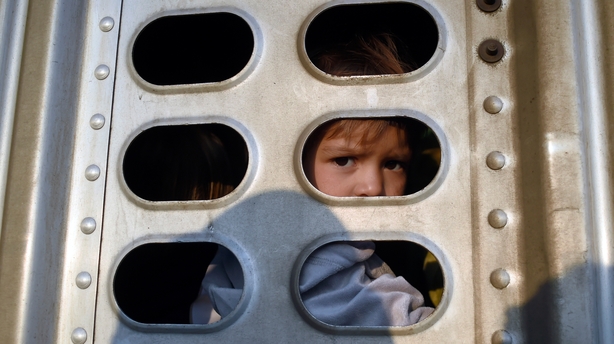
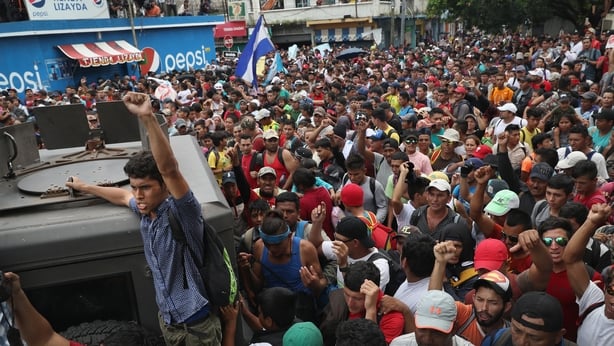
It all started on 12 October at San Pedro Sula, the second largest city in Honduras, when 150 people began their journey towards the US.
They picked up thousands along the way as the group moved through Honduras and Guatemala.
Several within the caravan spoke of entire neighbourhoods leaving their homes to join.
Most said they felt safer advancing as part of a large crowd.
Why are the leaving?
A majority are fleeing dire situations - poverty, violence and gang crime.
Once known as the "murder capital of the world", Honduras had a murder rate of 42 per 100,000 last year.
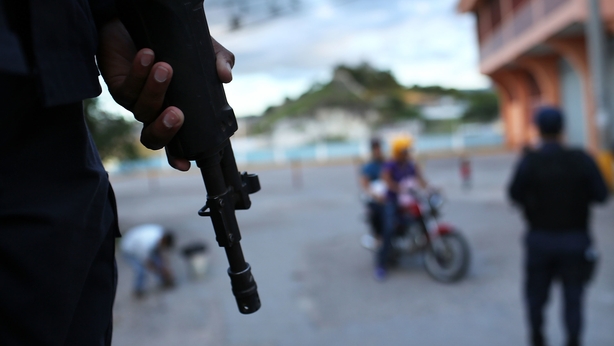
Neighbouring El Salvador is no better, with a rate of 60 per 100,000.
Gangs there control and terrorise communities with trafficking, forced labour, sexual violence and extortion.
RTÉ's @eimearlowe and Ken Fogarty travelled to Mexico to find out why thousands are continuing to try to cross the border into the US, where they are clearly not welcome. pic.twitter.com/ZSIg1iMoFJ
— RTÉ News (@rtenews) March 20, 2018
Parents who carry their children say they do not want their offspring to be recruited into these gangs and grow up with the high levels of hostility.
By going to the US, some hope for freedom and that they can earn enough money to send back to loved ones who stayed behind.
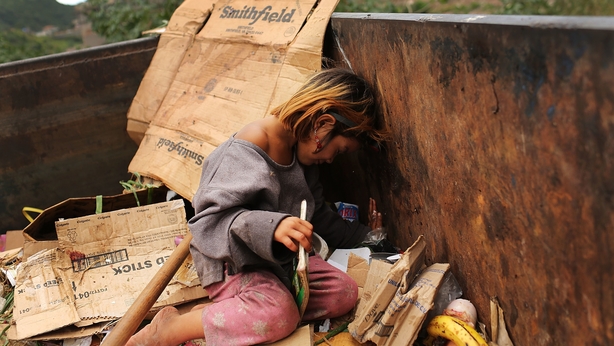
The millions of steps are not the only challenging aspects of the journey.
As the group started in Honduras, some were arrested and others who were travelling via bus had their papers seized and had no option but to travel by foot.
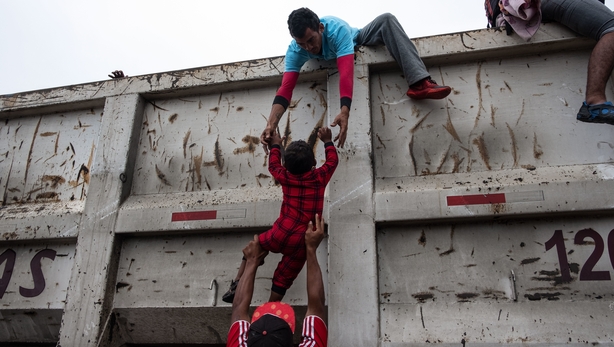
While walking long distances, the caravan has used illegal routes and smugglers.
One woman told reporters she travelled in an ice-cold container truck.
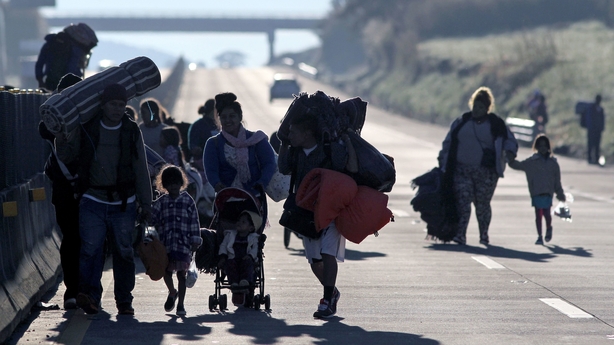
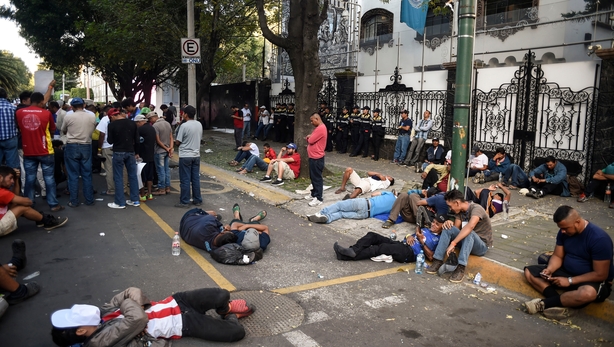
By the time they arrived at Guatemala's border with Mexico, police dressed in riot gear blocked them from entry.
The crowd grew violent as migrants threw rocks and toppled a metal barricade. Police responded with tear gas.
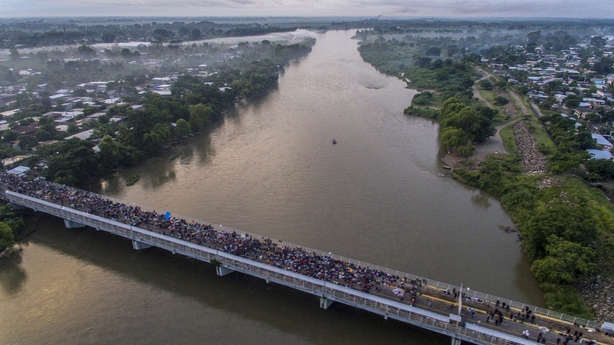
Some were permitted entry, others desperate to continue their travels attempted to cross the Suchiate River to bypass authorities.
A low lying police helicopter hovered above them, creating waves and currents, trying to block and disrupt their efforts.
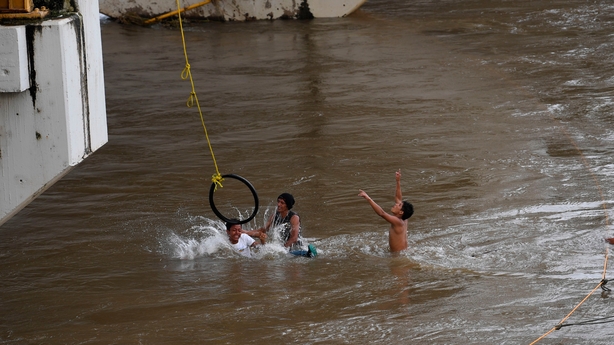
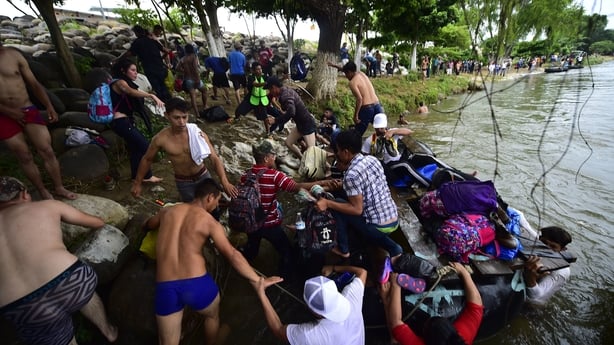
Many members of the caravan have also disappeared.
There are reports that more than 100 people, part of the migrant caravan, were kidnapped by a Mexican cartel.
Human rights groups say they were probably abducted in order for the gangs to extort their family members.
As the 3,000 Central American migrants come towards the end of their trek, protests in Tijuana have rocketed over their arrival.
We need your consent to load this rte-player contentWe use rte-player to manage extra content that can set cookies on your device and collect data about your activity. Please review their details and accept them to load the content.Manage Preferences
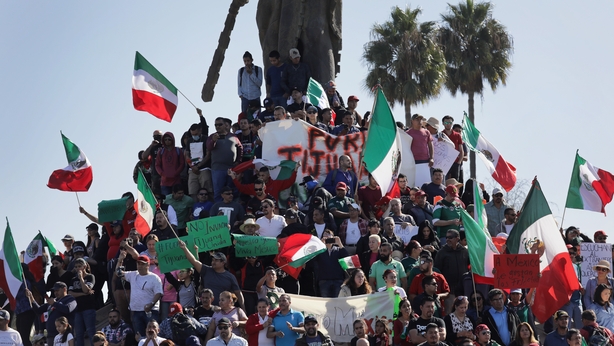
Police stood in riot gear as they tried to control demonstrators waving Mexican flags and wearing patriotic colours, campaigning that there is not enough space in Tijuana to house the growing number of migrants.
They also accused them of putting their city's security at risk.
But it has not been all hostilities.
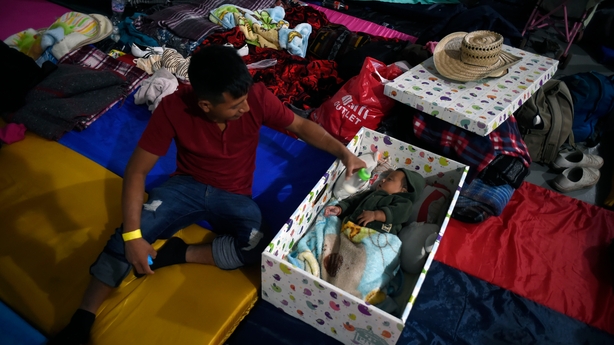
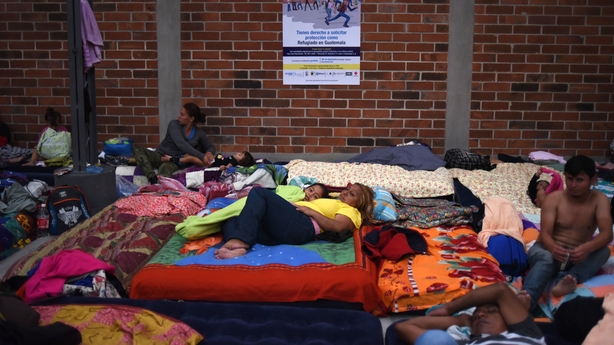
Encamped for nights on end using backpacks for pillows and rubbish bags for tents, locals of towns and villages have given the migrants food and water.
Mexicans place clothes and shoes out for caravan migrants in Huehuetan. There is still kindness and generosity in the world. pic.twitter.com/IJhTDSQF9J
— Patrick Oppmann CNN (@CNN_Oppmann) October 22, 2018
Mexicans placed clothes and shoes out for them in Huehuetán while Mexico City also dedicated its Day of the Dead parade to the migrants.
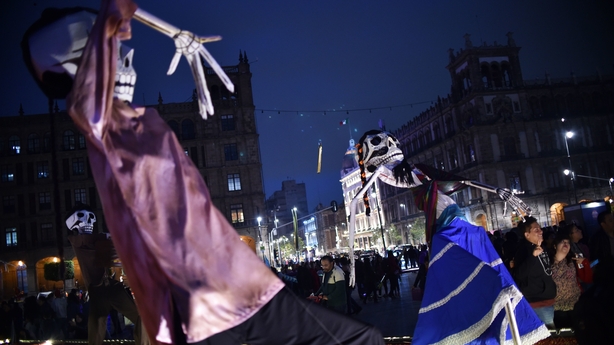
What's next?
Some have already reached the border, while more are on their way.
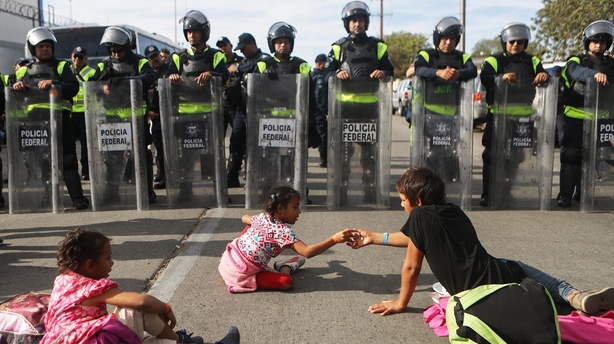
As the exhausting, gruelling physical journey comes to an end, a more complicated and political one is only beginning.
While the caravan marched north, US President Donald Trump doubled down on his immigration policies.
Moving away from presidential tradition, Mr Trump campaigned heavily during the recent Midterm Elections against open borders and the migrant caravan.
To thousands of supporters around the country, he described the caravan as an "invasion" and claimed criminals were among the group.
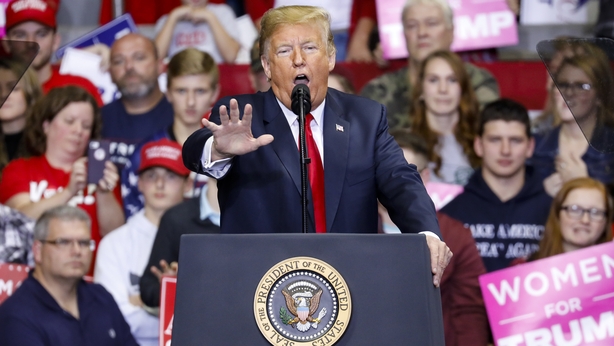
He was a man of his word too. At the beginning of November, the president signed a proclamation declaring that people who crossed the border at unofficial US ports of entry would be ineligible for asylum.
That means that the migrant would only qualify for seeking asylum if they waited in line at legal checkpoints.
A federal judge in California temporarily blocked this, but Chief Justice John Roberts came under fire from the president himself for the verdict.
Sorry Chief Justice John Roberts, but you do indeed have "Obama judges," and they have a much different point of view than the people who are charged with the safety of our country. It would be great if the 9th Circuit was indeed an "independent judiciary," but if it is why......
— Donald J. Trump (@realDonaldTrump) November 21, 2018
It is something that the Chief Justice was having none of and he rebuked President Trump for calling him an "Obama judge".
The war of words to the side, those who have travelled the thousands of kilometres will now meet more than 5,500 US troops at the border.
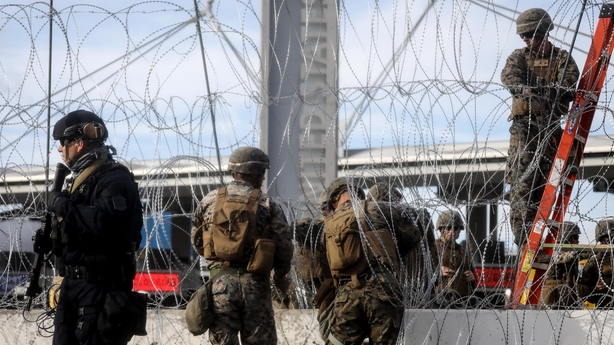
They have been deployed to "harden" it but they will be unarmed after questions were raised when Donald Trump once implied that if there was violence at the border the army would respond with fire.
The process of asylum claims remains open for now, but it is not sure for how long.
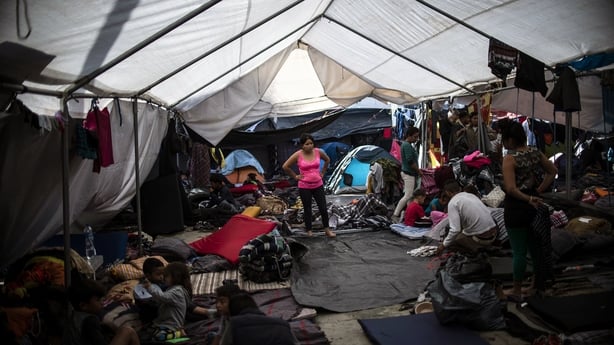
Usually those seeking asylum are able to stay in the US while their claims move through the immigration court.
According to reports, the Trump administration plans disruption for that rule, implementing a system that if a migrant does not specifically fear persecution in Mexico that is where they will stay.
We need your consent to load this Facebook contentWe use Facebook to manage extra content that can set cookies on your device and collect data about your activity. Please review their details and accept them to load the content.Manage Preferences
As the wall remains only bricks and mortar, Mr Trump has once again warned of closing the border completely with Mexico if disorder breaks out among the thousands of migrant who have gathered there.
After more than five million steps, there are no more to take..
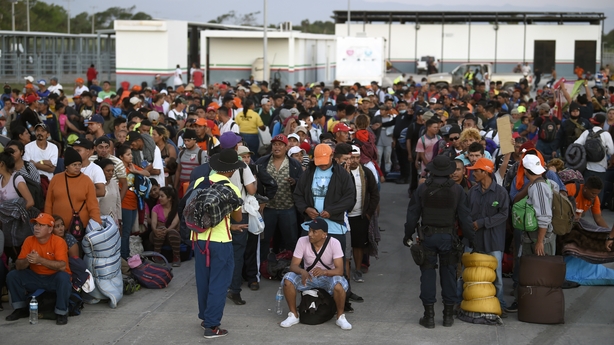
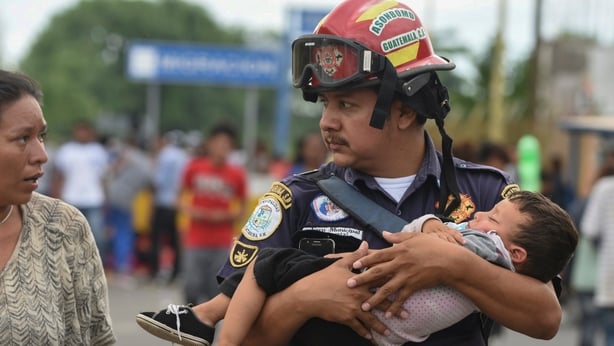
Their wait for claims to be processed will not take weeks, but months.
As their journey towards the American dream continues, their next tests are on their desperation and patience.
